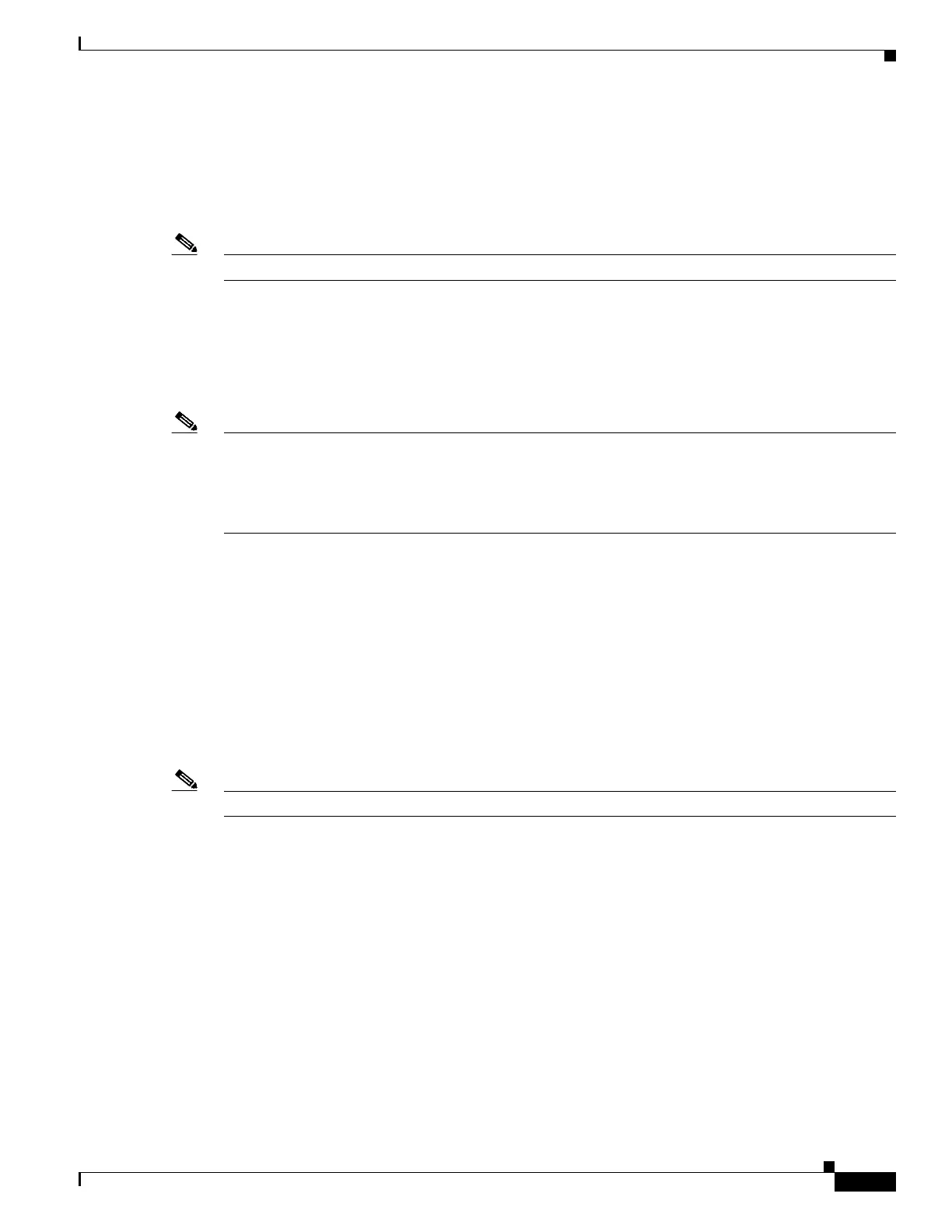1-43
Cisco ASA Series CLI Configuration Guide
Chapter 1 Configuring Connection Profiles, Group Policies, and Users
Group Policies
To configure an external group policy, perform the following steps specify a name and type for the group
policy, along with the server-group name and a password:
hostname(config)# group-policy group_policy_name type server-group server_group_name
password server_password
hostname(config)#
Note For an external group policy, RADIUS is the only supported AAA server type.
For example, the following command creates an external group policy named ExtGroup that gets its
attributes from an external RADIUS server named ExtRAD and specifies that the password to use when
retrieving the attributes is newpassword:
hostname(config)# group-policy ExtGroup external server-group ExtRAD password newpassword
hostname(config)#
Note You can configure several vendor-specific attributes (VSAs), as described in Appendix C, “Configuring
an External Server for Authorization and Authentication”. If a RADIUS server is configured to return
the Class attribute (#25), the ASA uses that attribute to authenticate the Group Name. On the RADIUS
server, the attribute must be formatted as: OU=groupname; where groupname is identical to the Group
Name configured on the ASA—for example, OU=Finance.
Creating an Internal Group Policy
To configure an internal group policy, enter configuration mode, use the group-policy command, specify
a name, and the internal type for the group policy:
hostname(config)# group-policy group_policy_name internal
hostname(config)#
For example, the following command creates the internal group policy named GroupPolicy1:
hostname(config)# group-policy GroupPolicy1 internal
hostname(config)#
Note You cannot change the name of a group policy after you create it.
You can conifgure the attributes of an internal group policy by copying the values of a preexisting group
policy by appending the keyword from and specifying the name of the existing policy:
hostname(config)# group-policy group_policy_name internal from group_policy_name
hostname(config-group-policy)#
For example, the following command creates the internal group policy named GroupPolicy2 by copying
the attributes of GroupPolicy1:
hostname(config)# group-policy GroupPolicy2 internal from GroupPolicy1
hostname(config-group-policy)#

